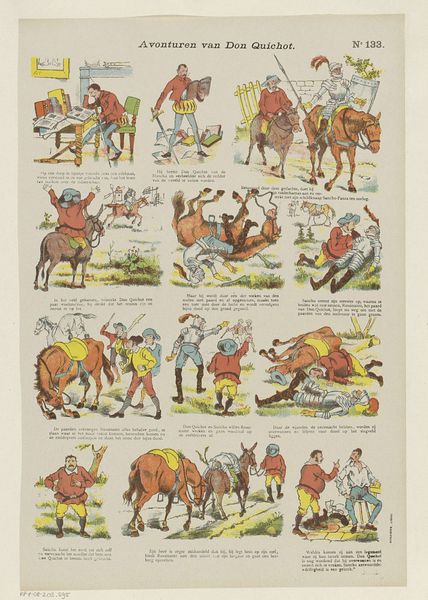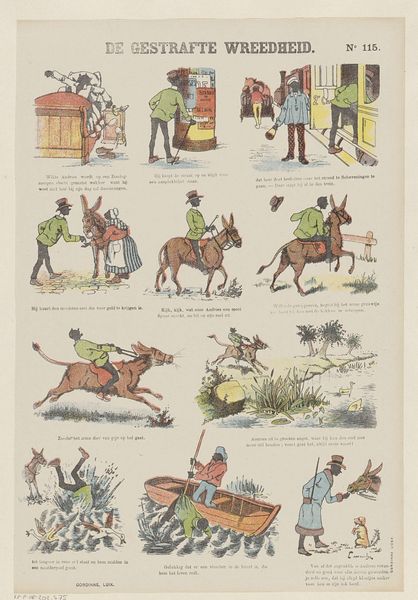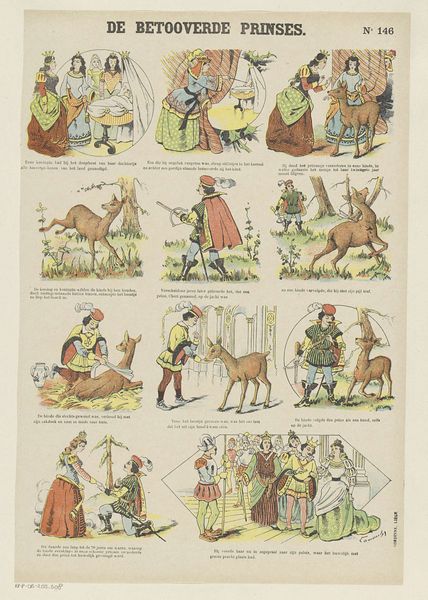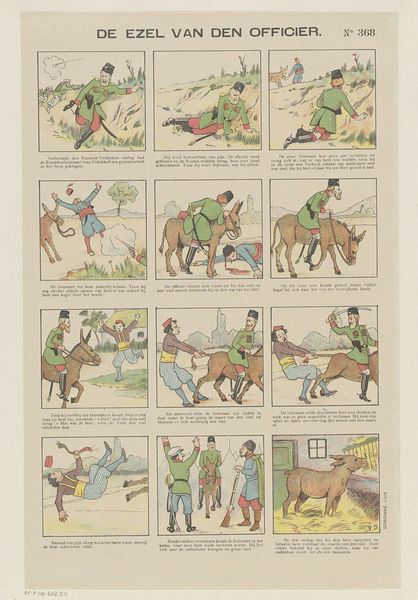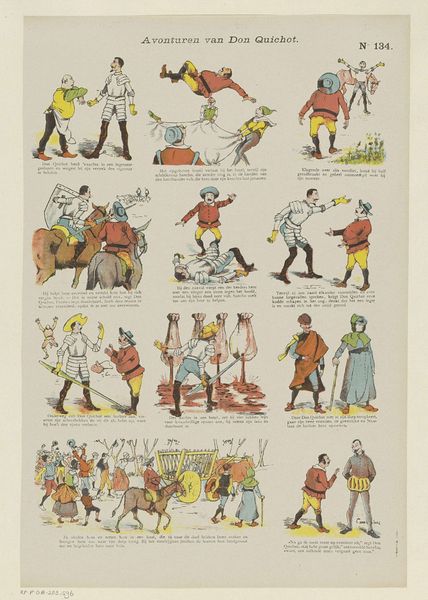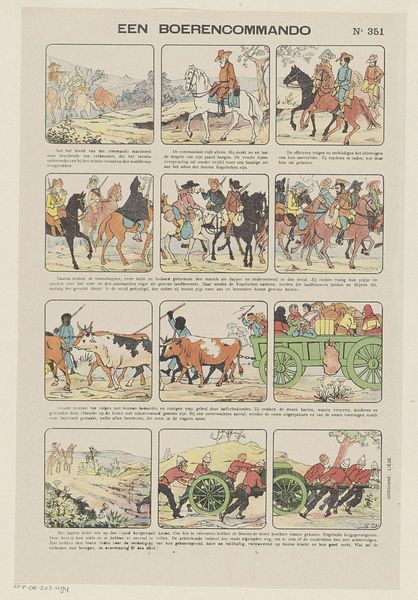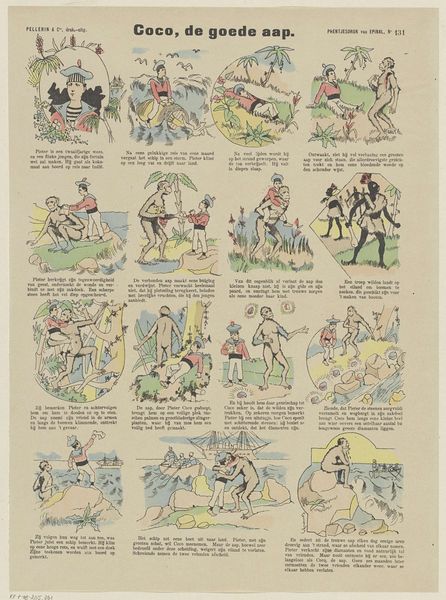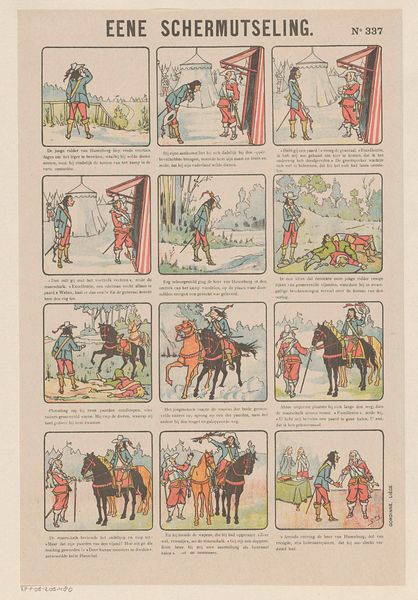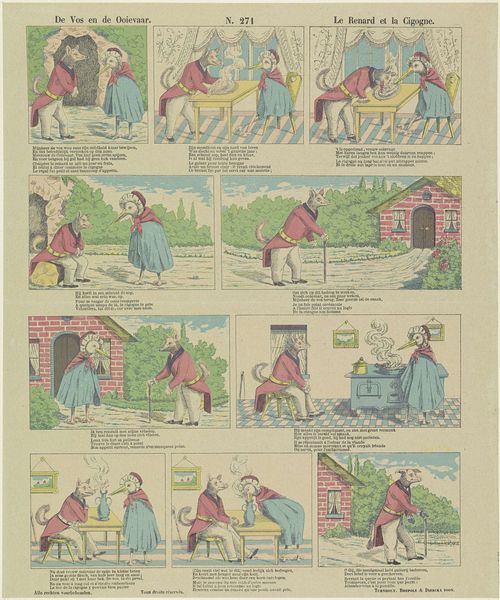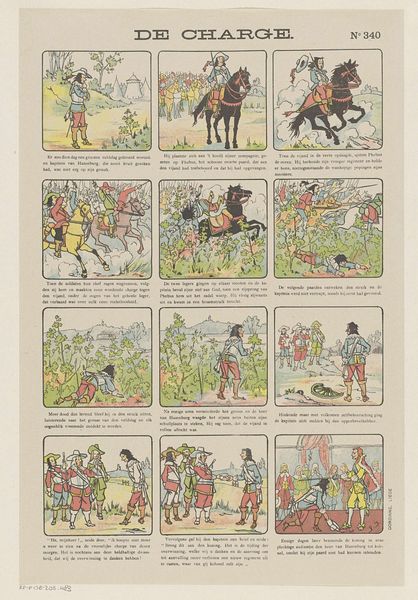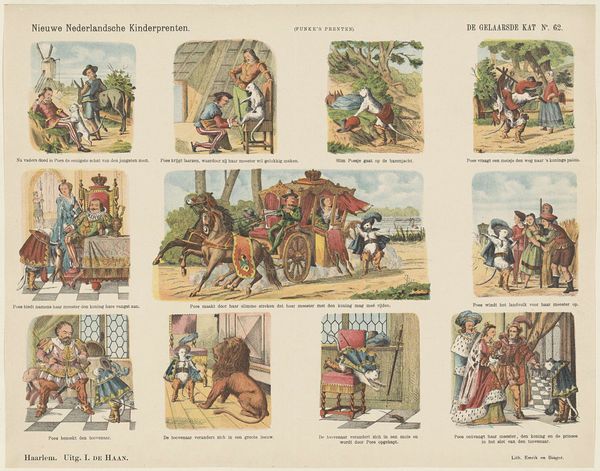
Dimensions: height 399 mm, width 270 mm
Copyright: Rijks Museum: Open Domain
Curator: At the Rijksmuseum, we are looking at “Een stierengevecht in Spanje,” or “A Bullfight in Spain.” This print, whose creation dates sometime between 1894 and 1959, presents something of a comic strip depicting various stages of a bullfight. Editor: My immediate impression is one of ordered chaos. The nine panels form a tight grid, but the activity within—men dodging bulls, horses galloping—feels quite dynamic, despite the subdued palette. Curator: That dynamism is fascinating, isn’t it? Notice how the artist employs repeating motifs - the red cape, for example. It appears in multiple frames, signifying both danger and a very particular cultural ritual. It's not just about the spectacle of violence but about established social structures playing out. Editor: Yes, and the bull’s repeated movements—charging forward, turning, being led off. They remind me of Muybridge’s motion studies. Though rendered here in a somewhat crude graphic style, we perceive implied movement across the surface, building to a climax we don’t actually see. Curator: This piece is definitely revealing, when we examine it from a cultural perspective. Bullfighting, of course, has potent symbolism—Spain, masculinity, courage in the face of death… all captured in this simple multi-paneled form, as much an archetype as a cartoon. What does that say about the cultural resonance of violence, as it exists both for those who watch, and the combatants in that ring. Editor: Indeed. I was struck by the limited use of color – mainly earth tones, red highlights - as the only means to differentiate certain parts of the event. Its effectiveness emphasizes shape and line—creating visual patterns. If you extract a single image of a combatant, we almost can't tell him from another panel! It makes this tragic tradition all the more senseless, through such aesthetic devices. Curator: That visual flattening, you say, renders a complex historical issue into pure sign. And so a potent cultural symbol enters the modern age. Editor: Yes, a violent and rather sorrowful legacy stripped down to almost comical form. An economy of means to depict, maybe ironically, anything but an economical issue.
Comments
No comments
Be the first to comment and join the conversation on the ultimate creative platform.
